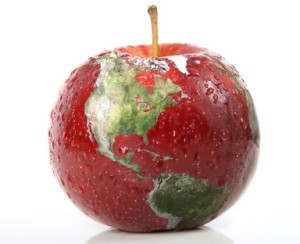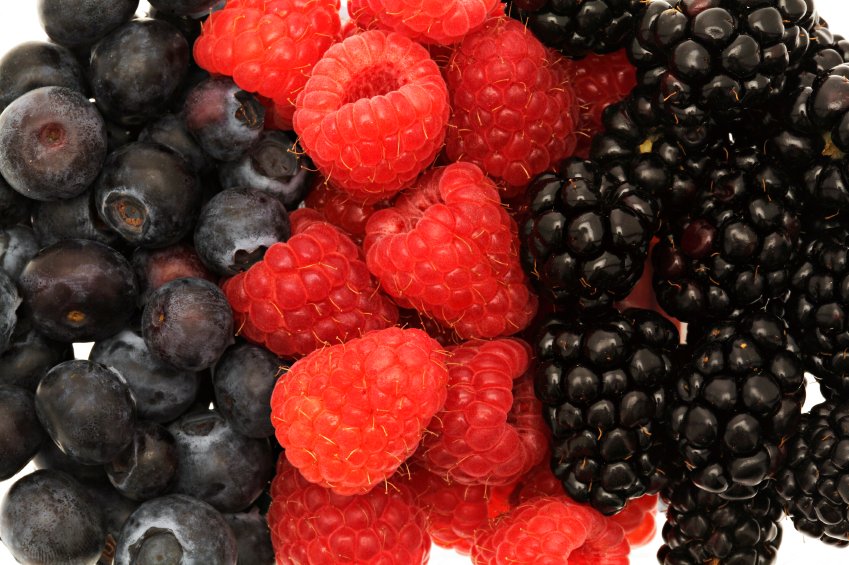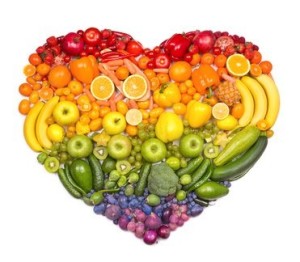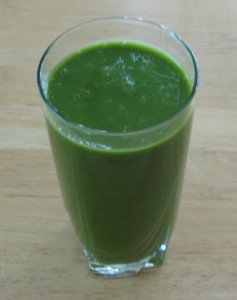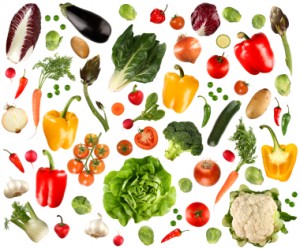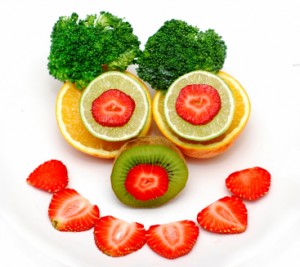Every 5 years the USDA and US Department of Health and Human Services publish updated dietary guidelines for the American public based on recommendations from the Dietary Guidelines Advisory Committee.
The Dietary Guidelines Advisory Committee (DGAC) is responsible for providing the US Federal government with current research-based evidence on diet, health, and nutrition, in a document titled the Scientific Report of the 2015 Dietary Guidelines Advisory Committee. From this report, the Federal government develops the Dietary Guidelines for Americans 2015, which will be released later this year.
For the first time in history, the DGAC has suggested that ‘health, dietary guidance, and the environment’ be considered in dietary choices and encourages people to focus their diet on whole natural plant foods including vegetables, fruit, nuts, seeds, legumes, etc. The committee especially emphasized the importance of the inclusion of vegetables and fruit in a healthy diet, which make up one-half of the current USDA MyPlate graphic.
The DGAC considers healthy plant-based diets to be more nutritious and of lower ‘environmental impact in terms of greenhouse gas emissions, land use, water use, and energy use’ than the average US diet. The committee acknowledges an overlap between health-promoting plant-based diets and reduced environmental impact. This connection has been a topic of discussion for many years in health circles, and now more than ever has become an especially timely topic given the current drought situation in many of the US western states, including California, where much of the food in the United States is grown.
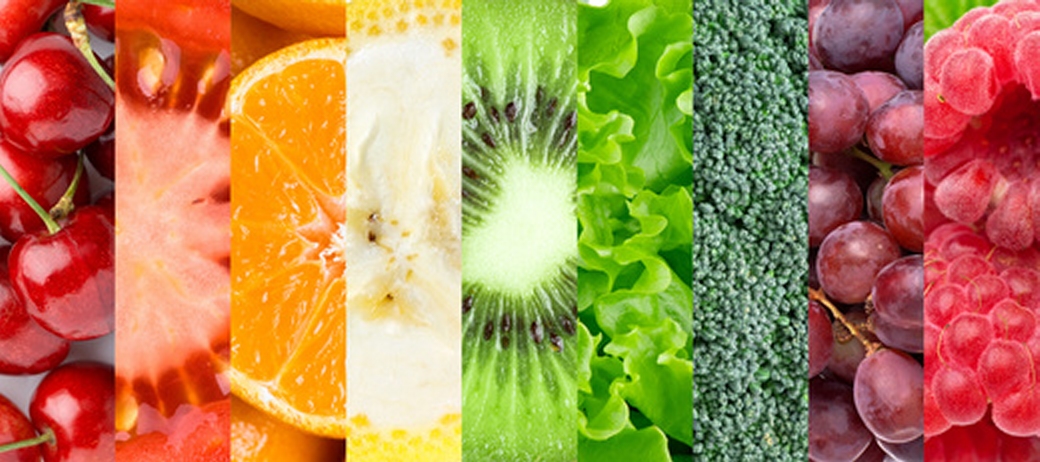
The committee recognizes that access to food is a major consideration and that ‘a sustainable diet ensures this access for both the current population and future generations.’ It is good to see that research-based strategies for producing enough food to feed our growing population healthfully and sustainably are beginning to get the attention of US policy makers. Intake of animal-based foods in the US is currently higher than the suggested plant-focused dietary patterns suggested by the committee. The committee is not necessarily asking people to completely give up any particular type of food, but rather to have a dietary emphasis on whole plant foods for both health and sustainability reasons.
It will be interesting to see the extent to which these plant-focused recommendations by the DGAC are reflected in the final Dietary Guidelines for Americans 2015. Regardless of the special interests that may have influence over the final document, I am happy to see that the DGAC makes their recommendations based on sound research and recognizes that the most health promoting diet is also the most environmentally sustainable. I am also pleased to see that the suggestions advocated by the committee are more aligned than ever with the information we teach in our online Mastering Raw Food Nutrition and Educator Course. For more class details, click here.
References and Research
Scientific Report of the 2015 Dietary Guidelines Advisory Committee:
http://www.health.gov/dietaryguidelines/2015-scientific-report/02-executive-summary.asp
http://www.health.gov/dietaryguidelines/2015-scientific-report/
One of the best ways to keep in touch with us is to join our email list. You’ll receive a free copy of Our Top 12 Strategies for Long Term Success on A Raw Plant-Based Diet eBook along with regular information about raw food and plant-based diets and periodic promotions for our classes, events, and other offerings!
5 Great Reasons to Add More Fruits and Vegetables to Your Diet
Raw fruits and vegetables are well-known for their health promoting benefits, so much that the current USDA MyPlate suggests that half of our diet be composed of fruits and vegetables. Here are many of the reasons why:
Vitamins
Fruits and vegetables contain many important and synergistic vitamins. Good examples include vitamins C and E. Many fruits and vegetables are excellent sources of vitamin C, including red bell peppers, strawberries, broccoli, cauliflower, papaya, lemons, tomatoes, cantaloupe, and of course, oranges. Leafy greens are rich in both vitamin C and vitamin E, and great sources include romaine lettuce, kale, mustard greens, dandelion greens, and collard greens.
Minerals
Bananas are famous for their potassium content, but fruits in general are great potassium sources. Dates, durian, apricots, honeydew melon, tangerines, oranges, peaches, nectarines, and mangoes are especially high in potassium.
Where do you get your calcium? Where do you get your iron? Many leafy greens can be rich sources of these important minerals, including kale, bok choy, dandelion greens, and even lettuce when eaten in quantity. Three cups of kale or dandelion greens provide over one quarter of the daily value for calcium and notable amounts of iron. A little-known fact is that some fruits can be notable sources of these two minerals as well. For example, only two valencia oranges or 5 figs provide 10% of the daily value for calcium. When eaten in greater quantities than this, as many raw food enthusiasts do, the calcium content can really add up. In regard to iron, although not as rich as leafy greens, mulberries, blackberries, and raspberries when eaten in quantity can provide notable amounts of this important mineral.
Phytonutrients
Plant foods in their fresh, raw state contain numerous phytonutrients, many of which can act as antioxidants which help protect our cells from age accelerating free radicals. Anthocyanins are antioxidants found in blue or purple foods such as blueberries and blackberries. Isothiocyanates are antioxidants found in cabbage family plants, also known as cruciferous vegetables, including collard greens, kale, bok choy, broccoli and Napa cabbage. Lutein and zeaxanthin are yellow-colored antioxidants, and are believed to play a role in protecting the macula of our eyes from damage caused by sunlight-induced free radicals. Lutein and zeaxanthin are found in foods such as dark leafy greens and yellow-orange fruits and vegetables, such as summer squash. Additional rich food sources include kale, Swiss chard, collard greens, romaine lettuce, broccoli, red bell peppers, dandelion greens, and zucchini.
Water
Water is involved in many essential body processes and makes up a significant percentage of body weight. In some raw food menus where fruits and vegetables make up the majority of foods eaten, the water content can be close to a gallon (almost 4 liters) or more! By comparison, raw menus that focus on denser more dehydrated foods, nuts, seeds, or oils can be less than half of this amount. Standard western menus are generally lower still at about one third the quantity of a high fruit and vegetable menu, creating the need for additional water consumption to meet daily needs. Unlike plastic water bottles, fruits and vegetables provide an abundance of healthy water in biodegradable containers!
Fiber
Dietary fiber is the indigestible portion of plant matter that is often referred to as roughage. Fiber plays critically important roles in various aspects of intestinal health, blood sugar and cholesterol regulation, and other important health benefits. Fiber keeps food moving though the intestines. It can help carbohydrates be digested more slowly, which in turn helps to stabilize blood sugar levels. It can bind to excess cholesterol in the digestive tract, helping keep blood cholesterol levels at an appropriate level. Fiber also plays a very important role in maintaining the health of the all-important human microbiome, as it provides food for healthy probiotic bacteria.
And the list goes on…
This is just the beginning! There are so many other reasons to include more fruits and vegetables in one’s diet and we are happy to see that the USDA now emphasizes the importance of these foods to the American public more than ever before.
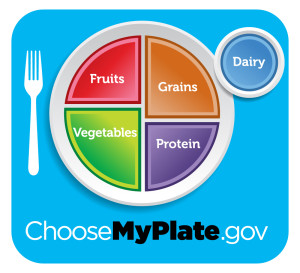
Posted in accordance with USDA MyPlate icon usage guidelines: The USDA does not endorse any products, services, or organizations.
One of the best ways to keep in touch with us is to join our email list. You’ll receive a free copy of Our Top 12 Strategies for Long Term Success on A Raw Plant-Based Diet eBook along with regular information about raw food and plant-based diets and periodic promotions for our classes, events, and other offerings!
The New USDA MyPlate – Moving Toward a Plant-Based Diet
I have to say, I was pleasantly surprised when I saw the recently updated dietary suggestions released by the U.S. Department of Agriculture in the form of a dinner plate, called MyPlate. The new icon presents the five food group concept, from the former food pyramid, in a simpler and more relatable style that encourages Americans to move toward a plant based diet.
The MyPlate guidelines encourage people to make half of their plate fruits and vegetables. The vegetable group contains a variety of veggies: chlorophyll-rich dark leafy greens, antioxidant rich red and orange vegetables, starchy vegetables, beans and peas, and other types of vegetables, many of which are popular staples of raw food enthusiasts. Beans and peas also fall under the protein category, as do nuts and seeds. The fruit group contains a wide variety of fruits generally available in natural food markets and grocery stores, making them easily accessible. Many fruits that raw food enthusiasts use in green smoothies can be found on this list.
The remaining half of the plate is divided into the grain group and the protein group. The grain group contains both whole and refined grain options, with gluten free choices. Raw food cuisine favorites such as buckwheat, quinoa, wild rice, and amaranth are on the list. Given that a large number of people in the U.S. consume the standard western diet with plenty of processed grains and refined grain products, the MyPlate suggestion to consume at least half of grains as whole grains is a step in the right direction. Keeping the recommendations relatable and “doable” for the general population is important encourage people to consider healthier options. I personally would like to see more of an emphasis on whole food choices.
Although the protein portion of the plate includes the choice of fish and lean cuts of red meat or chicken, there are numerous choices for vegetarians and vegans including beans, nuts, and seeds. Raw food favorites such as almonds, sesame seeds, pumpkin seeds, and cashews made the list. The MyPlate guidelines encourage people to vary their protein sources by choosing plant sources of protein.
Overall, MyPlate suggests consuming less fat and more fiber rich foods such as fruits, vegetables, grains, and beans. MyPlate also stresses the importance of exercise and eating an appropriate number of calories. Processed foods and foods that are high in added sweeteners and fats tend to be more calorie dense than whole foods, so the probability of consuming more calories per meal is much higher when one is consuming processed foods than when one is consuming whole foods.
The biggest difference between the former recommendations and the new MyPlate is the new icon, but there are some additional notable changes. For example, the dairy group on the former pyramid only gave options from dairy products, while the new MyPlate gives the plant-based option of calcium fortified soy milk. I personally would like to see this section expanded to include more calcium-rich plant-based options. MyPlate encourages people to read food labels to identify saturated fat, trans fat, sodium, and added sugar content. It also reminds people that sugar is often disguised on food labels under many names including: sucrose, glucose, high fructose corn syrup, corn syrup, and fructose. MyPlate makes an important suggestion: drink water instead of sugary drinks, because of their empty calorie content.
Overall, I applaud the USDA for suggesting that people consume whole foods, with an emphasis on whole natural plant foods. I am also happy to see the restyled presentation of their suggestions as the MyPlate icon. I think this is a very relatable and understandable way to convey dietary information to the American public. Of course, there are many areas where I would like to see improvements, but as a basic blueprint for people eating the standard western diet, I think that this model is a step in a positive direction. For those of us already consuming a whole food plant-based diet, this model provides some confirmation that we are consuming foods with numerous health benefits.
Reference: www.choosemyplate.gov

